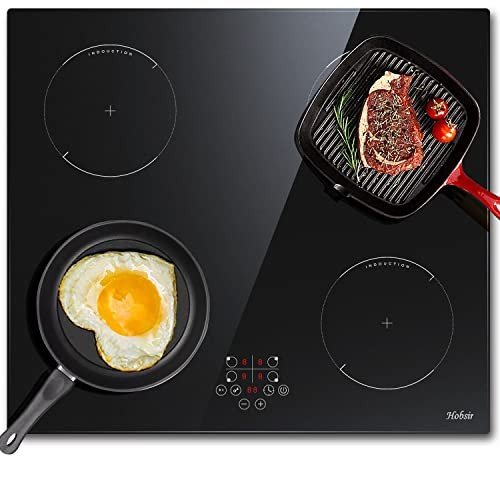Understanding Hobs and Ovens: The Essential Kitchen Appliances
In the realm of kitchen appliances, few items are as vital as hobs and ovens. These devices form the foundation of culinary activities, allowing people to create whatever from easy meals to elaborate feasts. Understanding the differences, types, and performances of hobs and ovens can significantly enhance one's cooking experience. This article looks into the intricacies of hobs and ovens, supplying insights that cater to both novice and experienced cooks.
What Is a Hob?
A hob, frequently described as a cooktop or stove top, is the flat surface on which pots and pans are placed for cooking. Hobs are geared up with heating elements that produce the required heat for cooking food. They are available in different forms, consisting of gas, electric, induction, and ceramic choices. Each type uses distinct benefits and downsides.
Kinds of Hobs
Gas Hobs:
- Heat Source: Natural gas or lp.
- Advantages: Instant heat control and responsiveness, preferred by numerous chefs for accurate cooking.
- Downsides: Requires a gas connection and can be less energy-efficient.
Electric Hobs:
- Heat Source: Electric coils or smooth glass-ceramic surfaces.
- Advantages: Generally easier to clean up, even heating, and commonly available.
- Downsides: Slower to warm up and cool off compared to gas.
Induction Hobs:
- Heat Source: Electromagnetic currents.
- Benefits: Quick heating, energy-efficient, and only heats up the cookware, not the surrounding surface.
- Drawbacks: Requires suitable cookware (ferrous products).
Ceramic Hobs:
- Heat Source: Electric and has a smooth glass surface.
- Benefits: Sleek appearance, simple to tidy, and even heating.
- Disadvantages: Can take longer to warm up and cool off.
What Is an Oven?
An oven is an enclosed appliance that cooks food by surrounding it with dry heat. Hobs Sale can be standalone systems or combined with hobs in a single home appliance called a range. Ovens are flexible tools that can be used for baking, roasting, broiling, and more.
Kinds of Ovens
Standard Ovens:
- Heat Source: Electric or gas.
- Benefits: Good for standard baking and roasting.
- Drawbacks: Can have unequal heat distribution.
Convection Ovens:
- Heat Source: Electric or gas with a fan for flowing air.
- Advantages: More even cooking and quicker cooking times due to airflow.
- Disadvantages: Can be pricier and may require adjustments in cooking times.
Microwave Ovens:
- Heat Source: Microwaves.
- Benefits: Quick cooking and reheating; excellent for defrosting.
- Disadvantages: Can not brown or crisp food well.
Steam Ovens:
- Heat Source: Steam generation.
- Advantages: Retains nutrients and wetness in food, much healthier cooking alternative.
- Downsides: Longer cooking times and normally higher cost.
Secret Differences Between Hobs and Ovens
While hobs and ovens serve the primary function of cooking food, their functionalities and uses differ significantly. The following table sums up these crucial differences:
| Feature | Hob | Oven |
|---|---|---|
| Cooking Method | Direct heat | Confined heat |
| Main Use | Boiling, sautéing, frying | Baking, roasting |
| Heat Source | Gas, electric, induction | Gas, electric, steam |
| Cooking Area | Flat surface | Enclosed area |
| Cooking Time | Generally faster | Varies based on meal |
| Control & & Precision | Immediate and direct | Count on settings and timers |
Benefits of Using Hobs and Ovens Together
Combining the use of a hob and an oven can significantly boost the cooking process. Here are some benefits:
- Versatility: Different kinds of food can be cooked simultaneously.
- Performance: Using both enables various cooking methods, such as searing on the hob and baking in the oven.
- Time-Saving: Multi-tasking can substantially minimize overall cooking time.
Upkeep and Care
To make sure the longevity of hobs and ovens, routine upkeep is vital. Here are some tips:
For Hobs:
- Clean spills instantly to avoid staining.
- Use proper cleaners for specific products (e.g., ceramic cleaner for glass-ceramic hobs).
- Frequently check gas connections for leakages (for gas hobs).
For Ovens:
- Wipe down the interior after each usage to avoid build-up.
- Usage self-cleaning features if offered, or use oven cleaners for difficult spots.
- Regularly check seals and gaskets for wear and tear (to keep heat performance).
FAQs About Hobs and Ovens
1. What is the very best kind of hob for a newbie cook?
Answer: A ceramic or electric hob is frequently recommended for beginners due to alleviate of usage and cleaning.
2. Can I utilize any pots and pans on an induction hob?
Answer: No, induction hobs need pots and pans made from magnetic materials (e.g., cast iron or stainless-steel).
3. How frequently should I clean my oven?
Response: It is a good idea to clean your oven every couple of months, or more often if you utilize it often.
4. Is it much better to bake in a stove?
Answer: Yes, stoves are typically much better for baking as they provide even heat distribution. Nevertheless, some delicate dishes might take advantage of conventional ovens.
Comprehending the functionality and differences between hobs and ovens is vital for any cooking enthusiast. Whether one prefers the instant heat of a gas hob or the precision of an induction cooktop, each type provides special benefits. Similarly, ovens vary widely in function, from standard baking to steam cooking. By appreciating these appliances' functions in cooking, cooks can improve their cooking abilities and improve their kitchen activities.

